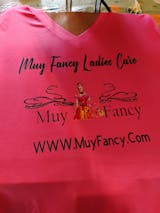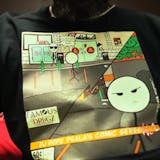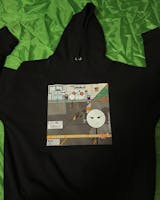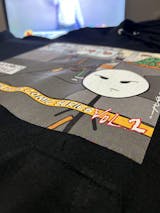DTF printing is one of the most widely used methods in the printing industry. However, digital textiles use many printing methods. One of them is DTG printing. Therefore, the differences between DTF and DTG printing are often discussed. These differences make one superior. This makes one more preferred. We know that DTF printing is used and preferred more than DTG. At this point, it will be appropriate to talk about the prominent differences of this printing method. If you are curious about the differences between DTF printing and digital textile printing, you can continue reading this content.
Color
Although DTF and DTG printing have similar characteristics in terms of color, the process is different. In DTG direct printing, white ink is printed first, while in DTF, colored ink is first printed on the transfer film. The white ink is absorbed directly by the fabric in DTG printing. In DTF, however, the coating does not absorb the ink, so the color cannot spread.
In the other printing method, the white color is first poured onto the surface and then the colored ink is poured. This affects the vibrancy of the colors and does not look very bright. However, in DTF printing, after the ink is printed, powder is sprinkled for a bright color appearance. This means that DTF transfer colors look better than DTG direct print colors.
Fastness
In the field of digital textile printing, three different garment fastnesses can be mentioned. Dry rubbing fastness, washing fastness and wet rubbing fastness. DTF printing stands out with a dry rubbing fastness of 4-4.5. In direct printing, this level is above 4. When it comes to wet rubbing fastness, DTF's level is usually 4. The wet rubbing fastness of DTG is generally at level 3-4. Washing fastness is better in DTF. While the washing speed is 4 in this type of printing, it is usually 3-4 in DTG direct printing.
Product Applicability
In DTG and DTF printing processes, pigment can be applied to any garment. At the same time, adhesives are needed to bond the pigment powders to the garment fabric. However, both printing methods rely on different practices in the process of product applicability.
The heat transfer process used in the DTF printing method is suitable for any fabric. The use of DTG transfer pigment ink differs. The pigment ink in this printing method is not very suitable for polyester and low cotton fabrics. Therefore, we cannot say that it performs effectively on every fabric. However, the use of pigment in the DTF transfer process is more flexible. Therefore, it can be easily applied to every fabric type.
Comfort
In DTG direct printing, the glossy part is illuminated when viewed from behind. In DTF transfer, however, no light is visible and it presents an opaque appearance. When blown on the fabric, it is seen that the DTG print breathes. On the other hand, the DTF print does not breathe. It is important for comfort in summer clothes and for the clothes to be made of breathable print. At this point, DTG printing is more advantageous than DTF printing. However, in winter, clothes such as sweatshirts, jackets and blouses, DTF printing offers a better solution. Because the print part does not breathe, it keeps warmer.
We have been providing DTF printing solutions for a long time. If you are still torn between DTG and DTF and can't decide which one is better, you can contact us. We can offer you suggestions based on our experience as a company that has been operating in the sector for a long time.









